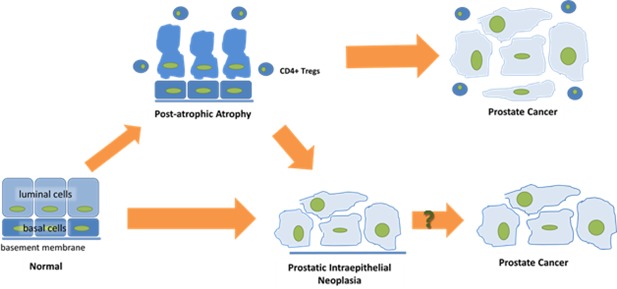Figure 6.

A schematic picture of early prostate cancer development in the presence of CD4+ Tregs. Exposure of normal prostate epithelial cells to infection, ischemia or a toxin can result in an influx of inflammatory cells and subsequent histological changes such as post‐atrophic hyperplasia (PAH). In the presence of CD4+ Tregs, PAH may progress to prostate cancer directly. Alternatively, progression of PIN to prostate cancer independently of Treg infiltration can occur
